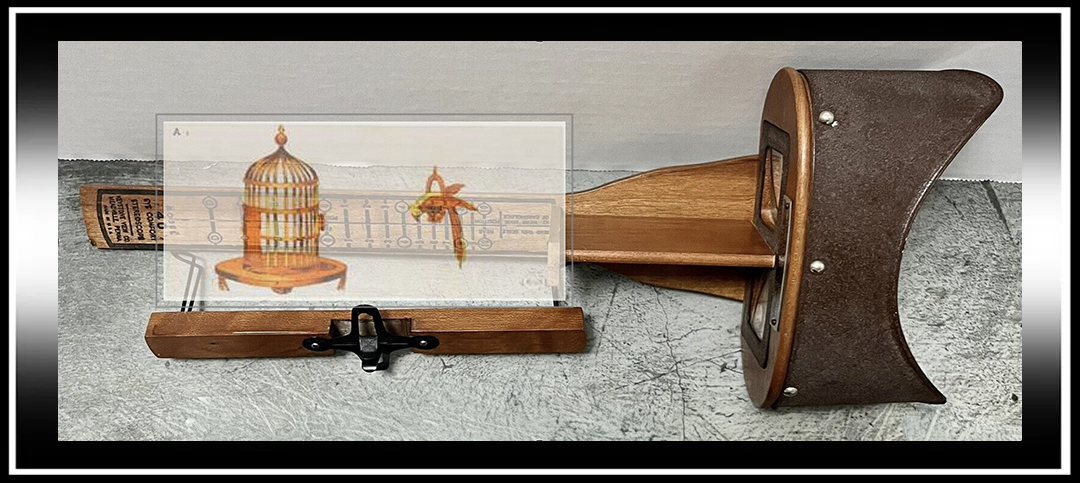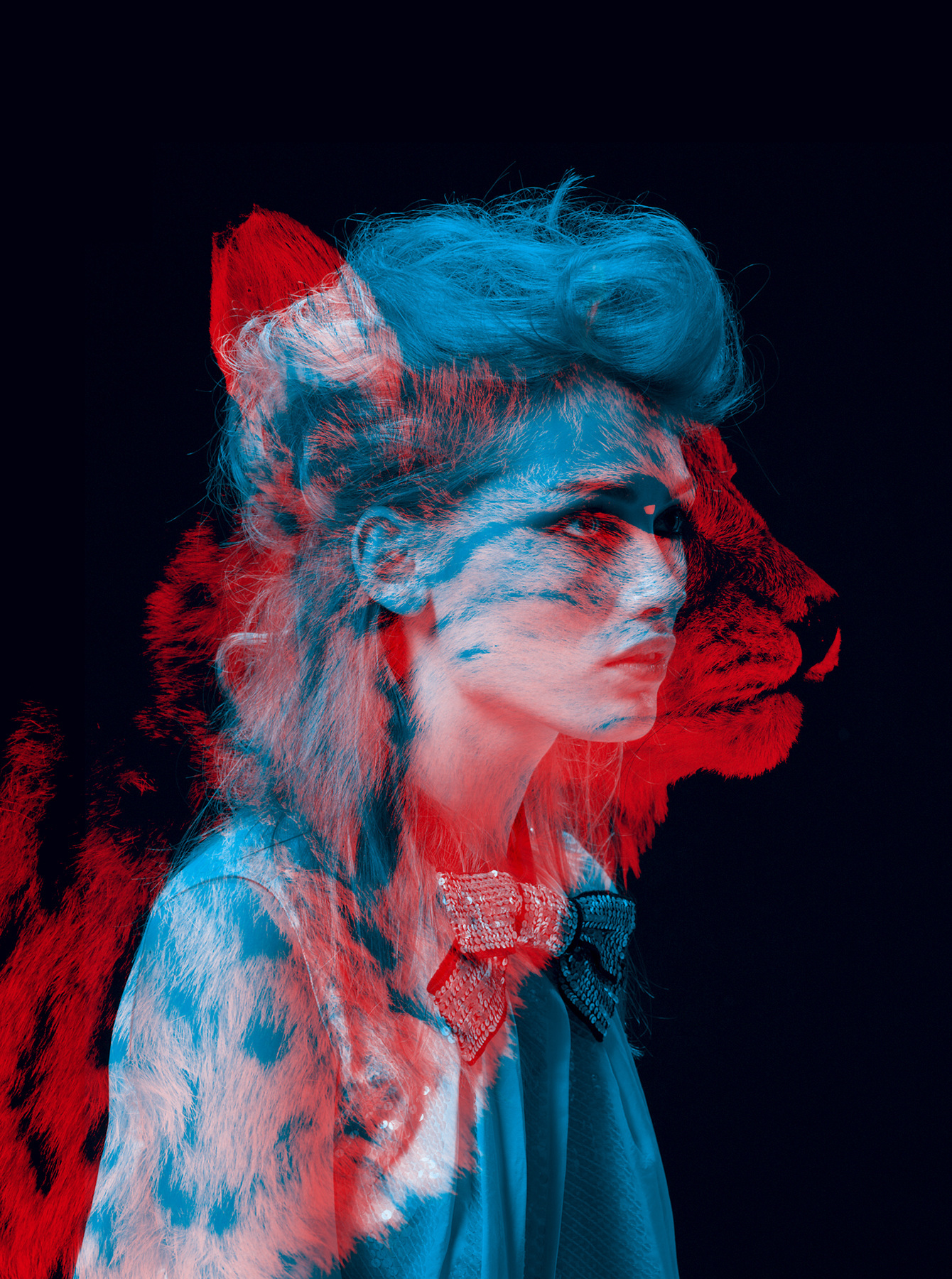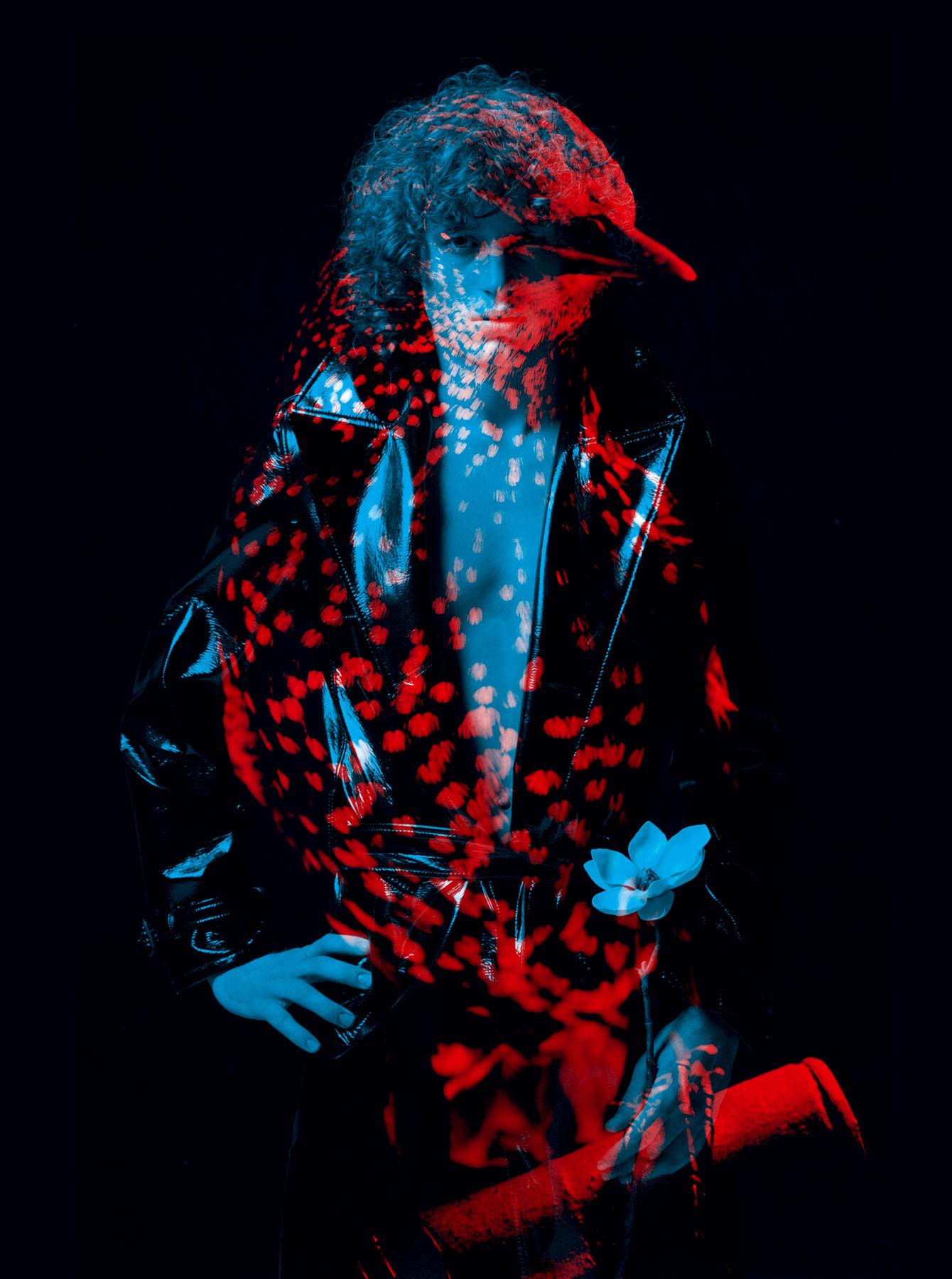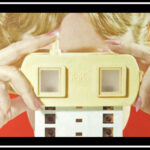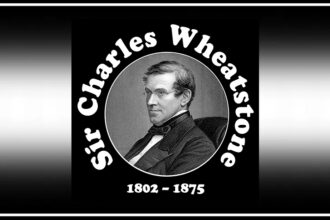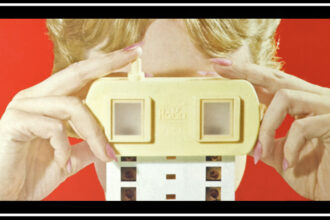By VICTOR LEVY
I embarked on a journey for which nothing had prepared me. For sixty years, I had lived with only a partial perception of the world. Being amblyopic, I don’t perceive depth in 3D.
Our understanding of amblyopia is largely shaped by the work of two researchers in the 1970s, David Hubel and Torsten Wiesel, who studied the vision of young cats and later monkeys. They showed that the brain does not simply use the eyes as “cameras”; instead, it learns to interpret and process visual information. Certain neurons respond specifically to particular shapes, directions, or movements.
1. David Hubel and Torsten Wiesel Cat Experiment, 1968 (Paul Lester, YouTube)
Warning: the footage in the above link includes scenes of the cat used in the experiment, which some viewers may find distressing.
They also demonstrated that after a prolonged period of visual deprivation, the animals could no longer recover normal binocular vision or stereoscopic perception, seemingly supporting what had long been standard clinical practice for the treatment of amblyopia.
Their research helped shape modern neuroscience’s understanding of vision and reinforced the concept of a “critical period” in visual development.
Living without depth perception
If vision is not restored in time, by around eight years of age in humans, one must learn to adapt to an incomplete perception of the world: living with the fear of losing the good eye, enduring persistent eye strain, and, above all, coping with the lack of stereoscopic vision.
The brain is remarkable, it compensates by developing other abilities: adjusting balance, estimating distances without depth, and relying more on hearing or touch.
I am stereoblind. My two eyes see very differently: one sees reasonably well, the other only shadows. Following medical advice, my parents were told clearly:
| “For him, it’s best to avoid studies that require sharp vision.” |
Architecture was one of the disciplines not recommended. Yet this is the profession I chose and happily practiced for over forty years.
Visual perception shapes how we relate to the world and influences the way we design forms and spaces. Not being able to perceive stereoscopy doesn’t mean being unable to imagine and design spaces.
In my architecture, I composed spaces from simple plans and volumes.
Light, colour, materials, and attention to detail became my signature.
2.3. Vienna — The way I perceive space with one eye represented by a 2D photograph and depth map, each plane has a different color.
Preparing for a long journey
Three years ago, my partner and I decided to go on a long cycling trip to the far reaches of China. In these regions, hospitals are sometimes difficult to reach quickly. When you have only one functioning eye, the speed of medical intervention can mean the difference between living a relatively normal life and going blind.
Before leaving, I went to see my doctor. After an eye examination of both eyes, I asked the question that had been on my mind since childhood:
| “Will I ever regain sight in my amblyopic eye?” |
| “Maybe with a bionic eye? Technology does amazing things these days,” |
The answer was clear:
| “No, it’s impossible. The optic nerve no longer works.” |
I’ve been told the same thing for sixty years.
Yet a little voice inside me kept saying something different:
| « But you have already seen…! » |
Twenty years earlier, I went to see a surgeon and asked him to operate on my amblyopic eye. ‘It’s not really necessary, you’re amblyopic, you won’t recuperate vision of this eye.’ I insisted, and he operated on me with a new laser that they had recently acquired in his department.
Two days after the bandage was removed, my vision was perfect—20/20. The surgery had been successful. I experienced a strange sensation, as if my perception and balance had been completely inverted.
Fifteen days later, during a follow-up visit, my visual acuity had dropped to 20/100, almost back to what it had been before the operation.The surgeon looked confused, and I couldn’t help feeling sad and frustrated.
Things have remained the same ever since.
Duchamp visuel
After the journey, despite long-held assumptions and past disappointments,I decided to try to improve my vision and document this process through creating images.
My friend Fabien de Cugnac and I showcased our work, centering on the theme of vision. Fabien presented images that stirred the imagination and invited interpretation—these were pareidolias. I, on the other hand, exhibited images that reflected my journey in recovering my vision: rediscovering the richness of materials, colors, and textures, and seeing them again.
4.5. Exhibition Installation, Museum space, faculty of architecture La Cambre- Horta.
The exhibition also featured texts and discussions with Nathalie Weytiens, my visual trainer who teaches the Bates Method among other approaches, with whom I regularly shared my discoveries. I attended a few sessions—not to follow the method exactly, but to clarify and make sense of what I had read. I had already read a series of books describing her method, written by different authors across different periods. The book that impressed me the most was The Art of Seeing by Aldous Huxley, written after he recovered his vision and in support of his teacher, a former assistant of Dr. Bates, who struggled against the « orthodox » ophthalmologists, as Huxley nicknamed them.
I’ve never liked instruction manuals; I couldn’t follow the method as written. To truly understand, I had to experience it as a child would, as if I were discovering vision for the very first time.
During my last visit, Nathalie said to me, among other things: “I know my eyes.” That simple sentence struck me profoundly, making me realize just how little I truly knew about my own eyes.
I invited Axel Cleeremans to see the exhibition and discuss the hypothesis I had been developing. Axel is a neuroscientist at our university who works on consciousness. His presentation on his website immediately caught my attention, and I felt he might be able to share in the work I had been exploring. His reaction both surprised and encouraged me: “What you describe is not impossible.” We spoke about Bates, Coué, the placebo effect, neuroplasticity, consciousness, and the remarkable capacities of the brain when it is properly trained and stimulated. That conversation gave me a renewed sense of possibility and motivation to continue my journey.
6.7.8 Three selected photographs: What I discover, what I see, behind the mask.
| « One day, I felt the need to take off my glasses. Depending on the moment, I am alternately: a laboratory animal, an experimenter in a white coat, a neuroscience researcher, a science historian, a cyclops baby, a New Age reader, and finally Polnareff on his way to a costume ball. » |
An old-fashioned optician
The following year, during a trip to Vietnam, I went to Ho Chi Minh City. I went into the opticians’ district and chose a small shop that looked unchanged for years. An old man and his wife welcomed me warmly. I picked out three frames and asked them to make glasses with the same lenses for both eyes.
9. Ho-Cho-Minh city in the optician shop.
10. Trial lens set with corrective lenses.
They gave me access to the trial lens set and I tested my vision by trying to read a sign across the street, deliberately choosing a slight undercorrection so that my eyes would have to relax and accommodate naturally for distance.
Since childhood, my prescriptions had always been very different for each eye, which made stereopsis impossible. With different corrections, objects appeared to be different sizes, and I could never bring the two images together to form one. This time, though, I decided to heal my vision in gradual steps, reducing the correction a little more with each new pair of glasses.
For the first time, I felt like I was taking control of my vision again.
Vision Training While Cycling
Cycling has turned out to be excellent training. While my eyes stay focused on the distance, my peripheral vision constantly scans for danger, and my near vision keeps track of the road and GPS. Everything happens in a dynamic, continuous flow. When I describe the way I ride, people are often horrified:
| “I don’t look at the road—I feel it.” |
11. Nho Que River, Ha Giang, Vietnam near the border of China.
I decided to give each of my eyes a name. Thor, my amblyopic eye, detects movement in my visual field—a car, a pedestrian, a pothole in the road. Vic, my healthy eye, then takes over to trigger the necessary reflexes.
After returning from my trip, I began exploring different objects and lenses with the curiosity of a child in a toy shop. Each time, I tried to understand their history and the historical context, as well as the science that made them possible—a playful and passionate exploration at the same time.
I will concentrate in this contribution to the blog on those that proved most effective for improving stereoscopic vision, though I experimented with a wide range of objects.
Camera obscura and pinhole glasses
Renaissance painters used the camera obscura to accurately capture perspective. A very small hole in a room projects an inverted image onto the opposite wall.
Pinhole glasses use this technique, increasing depth of field and sharpness on the retina. With these glasses, I rediscover precision without using optical correction. I see with both eyes, with roughly the same acuity, a more complete field of vision, and, above all, greater relaxation.
Stereoscopy is on its way…
12. Pinhole glasses.
13. Renaissance artist working inside a camera obscura to capture the landscape.
Binocular and telescope
I started with a monocular telescope. Thor looked into the distance through the telescope, while Vic tried to observe the same scene without it.
I practiced mentally switching from one eye to the other. It was a strange exercise, but it turned out to be surprisingly effective.
I wondered whether this exercise might serve two purposes: reactivating Thor and training Vic to accommodate more precisely. I also experimented with binoculars to compare and refine my perception.
Gradually, the two images began to merge, matching in brightness and detail, until they formed a single coherent scene. To better understand what each eye was seeing, I added a pair of anaglyph glasses. This seemed to confirm that my optic nerve and the retina-to-cortex pathway seemed still intact.
14. One eye looks through the telescope while the other stays open, I see the same scene with both eyes—only at different sizes.
15. Using binoculars with anaglyph glasses to better understand what each eye perceives.
Re-creating what we see
I wanted to understand how the retina is structured—its different zones and their functions. I hadn’t realized that the fovea is the only part capable of sharp vision, that colors are mainly perceived through it and the macula, and that the rest of the retina becomes increasingly imprecise, serving primarily for peripheral vision and night vision. I was fascinated to learn that cones and rods are distributed very differently across these zones, each adapted to its role, revealing just how specialized and intricate our eyes truly are.
During my research, I came across the work of Alfred L. Yarbus, a Russian scientist from the 1950s, who studied eye movements as people observed geometric shapes or works of art.
16. The Unexpected Guest : foveal movements tracked after participants were asked different questions.
17. Two-second viewing: six main points of focus captured by the fovea.
He showed that the eye makes tiny micro-movements, guiding the fovea to focus on specific details depending on what we want to see. Most strikingly, he demonstrated that these movements are influenced by the questions we ask ourselves—and therefore by our intentions.
From the various points it perceives in rapid succession, the brain reconstructs the surrounding blur. In other words, we are constantly re-creating what we see.
I felt the need to use photography to simulate what Yarbus and a deeper understanding of the eye’s optics had taught me, in order to better understand the pathway from vision to visual perception.
18. Bouquet of lowers as perceived by the brain, captured in a photograph.
19. Simulating retinal perception: fovea centralis, macula, retina, blind spot.
For someone who is short-sighted and amblyopic, understanding this process can be extremely valuable: it shows that vision can be trained, that we can learn to focus more precisely, and that clarity at all distances can be improved—especially by learning to concentrate our gaze intentionally.
I realized that I had grown accustomed to accommodating in a slightly blurred way. Relaxing my eyes has never come naturally to me, nor has looking into the distance. Yet without this relaxation, it’s impossible to focus at infinity—a necessary condition for viewing images through a stereoscope.
Both skills seem essential for maintaining visual flexibility, supporting proper stereoscopic vision, and allowing the two eyes to fuse their perspectives into a single coherent image.
Anaglyph and Binocular rivalry
Most people have a dominant right eye, but mine is the opposite. Anaglyph glasses are usually designed with red on the left and cyan on the right, yet I had to reverse the colours for them to work. Once I did, I could perceive depth perfectly—a curious experience, as I had expected the sense of depth to appear inverted.
What struck me when I first viewed anaglyph images was how effortlessly my brain reconstructed a sense of volume. Exploring the work of Helmo, in collaboration with Thomas Dimetto, I discovered binocular rivalry by deliberately diverging my eyes to separate the images. This phenomenon is absent when using only one eye, as we normally rely on a single channel of perception.
Through this exercise, I learned to ‘defuse’ my dominant eye, suppressing the habit of favouring it over the other, and training my eyes to work independently while sharpening my awareness of the fusion required for 3D vision.
20. 21. 22 Bêtes de Modes, Galeries Lafayette in 2006. Embedded directly from Thomas Dimetto’s website. Part of his project with Laurent Croisier & Christophe Urbain. © Labonnemerveille | © Thomas Dimetto | © Helmo
When producing my own images, it was initially the anaglyph technique that helped me most, offering a clear sense of depth and spatial relationships that guided my work. For someone with amblyopia, whose eyes differ significantly in strength, the weaker eye is often suppressed and used only occasionally—perhaps for peripheral vision or situational awareness. By practicing binocular rivalry, I have gradually brought both eyes into play more consistently. For instance, I now consciously use my right eye when touching or interacting with an object—an entirely new experience that feels surprisingly fluid and natural.
23. Binocular rivalry, © Vic & Thor.
24.25. I separate the two images by diverging the eyes while wearing anaglyph glasses.
Retinal persistence and iconic memory
It was probably around this time that I became naturally interested in earlier research from the early 20th century.
Stroboscopic glasses, used to train speed and anticipation in athletes, caught my attention, and I bought a pair without knowing exactly what I would do with them. The occlusion frequency can be adjusted for each eye, and at first, I couldn’t decide which setting to use. I began experimenting anyway, trying out different scenarios. Then I remembered my visits to the cinema museum—zoetropes, phenakistoscopes, and all those early optical toys, which had always fascinated me.
I thought about retinal persistence, which lasts roughly one-tenth of a second and was first studied by Joseph Plateau. This concept now seems challenged by current science, which highlights the brain’s role in reconstructing fluid motion.

26. 27 Alphonse Giroux : phenakisticope (phenakistoscope) John Wallace, Tangible Media, used under CC BY-NC 4.0.
By adjusting my glasses to expose the images during this brief interval, I tried to memorise what I saw, engaging my iconic memory. To my surprise, certain settings allowed me to perceive the images more clearly after only a few minutes.
Inspired by Holmes’ stereoscope, I also blocked the central part of my visual field, allowing my eyes to work more independently and to explore depth perception more freely.
Worth’s Amblyoscope
Recently, I came across a pair of children’s periscopes being sold together on a second-hand website. I had a feeling I could turn them into something useful, so I followed my intuition and bought them. Around the same time, I had discovered Worth’s amblyoscope — a device used to treat amblyopia. This clever instrument works by presenting each eye with an incomplete image, which the brain then merges into a single, complete picture.
Inspired by this, I decided to transform the periscopes into a simple, accessible, and functional amblyoscope. Early tests have been very promising.
Thanks to John, who collects and documents physical storage media on the Tangible Media website, I was able to study the original instructions and gain a better understanding of the amblyoscope’s design — which turned out to be far more complex than I had anticipated.
Building on this experience, I now want to try creating very simple, reproducible devices that replicate the experiments and exercises I have successfully practiced, so that others can explore and benefit from them as well.
To be continued…
28. Worth-Black amblyoscope, instructions front cover.
29. Set of cards.
30. Amblyoscope, Claud Alley Worth of London, refined by Nelson Black. John Wallace, Tangible Media, used under CC BY-NC 4.0.
31. Looky periscope.
Gabor Patches and Nintendo DS
I recently started exploring programs and apps aimed at visual stimulation for amblyopia. My criteria were simple: they had to be accessible, inexpensive, and scientifically validated.
My first discovery was Sightseeing, a program developed by the Brain Game Center, a research lab at the University of Riverside, California.
The games rely on Gabor patches—visual patterns of blurred, contrasting stripes—used in research and visual training to stimulate perception of shapes, orientations, and spatial frequencies. This immediately reminded me of Hubel and Wiesel’s discoveries on how cats perceive visual stimuli.
32. Gabor patches, different frequencies and orientations.
Next, I tried several apps, among which the standout was Vision Workout – Eye Training. Out of curiosity, I also explored the gaming world. Competitive gamers often use visual warm-up programs, such as FPS Eye Training Warmup, to sharpen their reflexes and perception before matches.
That’s when I came across a remarkable Japanese program from the 2010s designed for the Nintendo DS. It is Vision Training, created by Professor Dr Hisao Ishigaki. This program develops various visual skills inspired by sports, where such abilities are essential. Some mini-games even simulate sporting activities, training multiple skills simultaneously.
Knowing that athletes and video gamers could enhance various aspects of their vision through programs developed by research centers specializing in brain and vision studies was highly encouraging to me.
Developing these visual skills through training goes far beyond what standard visual acuity tests measure and reflects how vision is used in real life.
So here I am, armed with a Nintendo DS, my son amused at my antics, and a competitive spirit driving me to keep training!
Exploring Stereoscopy Through Photography
I never thought I would be interested in stereoscopic photography.
As a child, I tried looking at a disc on a View-Master, but it didn’t work—the difference in sharpness between my eyes was too great. For me, stereoscopy seemed forever impossible, and I had resigned myself to that.
I began to wonder whether stereoscopic photography could improve my three-dimensional perception. Observing a subject, taking photographs of it, and then viewing it in different formats seemed like a way to make real progress.
I equipped myself with a Fujifilm Real W3, a Lumix 3D1, and two synchronized GoPro Heroes. I usually take photographs of what I perceive—shapes, sequences, landscape, expressions—but with stereoscopic photography, I try to anticipate the 3D effect even before pressing the shutter.
Using i3Dsteroid, I transform my photographs into anaglyphs and animated GIFs.
This constant back-and-forth between reality, the composition of the image, and stereoscopic perception seems to exercise memory and helps reconstruct the visual pathway, reinforcing my sense of depth and spatial relationships.
33. Photograph tailored to my color perception through the use of inverted anaglyph glasses. (Fujifilm W3).
34. Testing Wide-Angle at the ‘Big in Japan’ Exhibition (GoPro Dual Hero).
35. In Quentin’s workshop, Atelier du rivage One of the last wooden boat builders (Huawei p60, cha-cha method, cross-eyed).
An Eye Patch Enabling Binocular Vision
The traditional treatment for amblyopia involves covering the healthy eye to force the lazy eye to work. This sometimes works, but not always. I have painful memories of those childhood sessions: tracing maps from an atlas with an unbearable headache. After a few attempts, I refused to continue, and the treatment was abandoned.
In my recent experiments, I made a patch that allows some peripheral vision from the healthy eye to pass through, using translucent vinyl. I use it while cycling, but prudently—only on cycle paths.
In these circumstances, Thor, my lazy eye, becomes dominant. However, as soon as I have any doubts about the condition of the road, I turn my head to check.
This sustained attention seems to make my two eyes work together in a complementary way. Unlike traditional opaque patches, which isolate the lazy eye and prevent cooperation, my translucent patch encourages both eyes to function together, reinforcing binocular vision rather than forcing monocular dominance.
I can measure Thor’s improvement by observing what he perceives. At first, Vic dominates the visual fusion with the translucent patch, but over time, I perceive more through Thor with mental focus.
Over time, this process seems to strengthen coordination and shared function between both eyes.
36. Testing the patch with different layer of tape.
Adjusting Mirrors to Achieve Fusion
I had in mind creating a Charles Wheatstone stereoscope, but with mirrors whose angles could be adjusted to artificially merge images for people who struggled to do so naturally. I found something close to what I had envisioned at NVP3D, a 3D film production company. Their version of a stereoscope proved perfectly effective, and for the first time, I was able to merge a stereoscopic image on a screen.
37. Looking through NVP3D Stereoscope, being able to see in 3D.
I favored Thor, my lazy eye, by partially closing the shutter on the other eye and adjusting the mirror angles so that the weaker eye became dominant. I was overjoyed.
Even more extraordinary, after just a few minutes of watching a video, Thor could see more clearly and precisely. I couldn’t believe it.
With each session, my eye seemed to “wake up,” as if the stereoscopic stimulation enhanced its perception and reduced suppression. My intuition was right: in my case, this work strengthens the lazy eye. Only time will tell whether Thor will ever regain fully normal vision.
The Healing Power of the Stereoscope
I had been searching for stereoscopes capable of training or treating amblyopia.
In the early 20th century, stereoscopes were indeed also used to train and improve vision, and I managed to acquire several of them.
Keystone produced the Eye Comfort stereoscope, while American Optical manufactured the AO Stereoscope Phorometer. The AO model was accompanied by a set of 71 cards compiled by Dr. Wells, each carefully selected for specific visual functions. Keystone, in contrast, offered a broader range of perception cards, emphasizing photographic content.
Recently, I discovered that Keystone had developed several specialized sets of cards tailored to particular visual disorders, an area I plan to explore further. These card sets, designed to be compatible with any Holmes-type stereoscope, appear to have been intended primarily for the treatment of strabismus and the training of stereoscopic vision. Nevertheless, I have begun experimenting with their use in cases of amblyopia, particularly where the eyes exhibit markedly different degrees of myopia.
I began my exercises with the Dr. Wells Series A cards, which focus on fusion. The results, combined with my other exercises, were helping both my eyes to work together. Yet I still couldn’t quite manage to fuse the images — the bird simply wouldn’t go into the cage.
38. Kroll series cards for testing binocular vision and eye alignment. Dr Wells Stereoscopic Cards, Series A, 17th edition.
Ultimately, the C series suited me best.
But it was primarily the ON NE card from Dr. Wells that made the difference.
Its text helped me understand the unconscious role the brain plays in fusion.
39. Keystone Eye Comfort avec la carte ON NE (ONE).
| « There is a great difference in the holding power of different cards as there is undoubtedly a psychic element in the case. The divided word, ON NE (ONE) creates a strong desire for fusion as one’s sense of propriety is offended at seeing the word break apart. » |
Extract from direction of use of Dr. Wells Selection of Stereoscopic Charts.
| « Visual inefficiency and its attending discomfort may he caused by poor lighting, by long hours of near-point work on fine details such as reading, writing, sewinig, and by ocupations requiring prolonged attention at near point. To engage in any of the afformentioned tasks when one is ill or fatigue is extremely detrimental. Any physical illness, nutritional causes, toxic condition, mental shock, or even emotional stress may be a contributing factor to, or a cause of, visual disturbance. » |
Extract from direction of use of Keystone View Stereoscope. No. 50 Home Training Visual Aid, 1943.
After just a short ten-minute session, I tested a black-and-white photograph I had received with my first Holmes stereoscope.
At first, I still couldn’t achieve consistent fusion. It was only when I allowed myself to watch alongside Vic — who sees the scene precisely — that Thor seemed to collaborate, helping my brain create depth. The effect was astonishing. Two young women, wearing long dresses and white headscarves, carried buckets on a wooden pole across their shoulders. Suddenly, they seemed to float above the background, and the card revealed its 3D magic. Unforgettable.
For the first time, I experienced the magic of stereoscopy: effortless, relaxed, almost as if the earlier session with the AO cards had prepared my eyes.
Afterwards, I began exploring a series of stereoscopic postcards L&L from the early 20th century that I had recently acquired. Each set contains 12 or 24 cards, transporting me to a new place.
Every day, choosing an envelope at random feels like stepping into another world and traveling through time and space.
A Journey, Not a Method
This is a personal journey through which I reclaimed my vision. Anyone hoping to follow a similar path must first come to understand their own visual perception and how their eyes function — this awareness is essential for discovering the steps needed to improve or restore sight.
In recent years, researchers in neuroscience and ophthalmology have increasingly recognized the importance of brain plasticity in the treatment of adult amblyopia. Various programs now build on this principle — from anaglyph-based games to occlusion programs in virtual reality that adapt progressively as learning takes place.
What connects these approaches to my own experience is the active engagement they require and the continuous feedback they provide
The key lies in experimenting, making mistakes, enjoying the process, studying past research, and gradually — step by step — regaining stereoscopic vision. Patience is vital: sixty years of stereoblindness and eye imbalance cannot vanish in a few minutes.
Unlike Sue Barry and Dave Bridgeman, who regained stereoscopic vision in a single moment — one through vision therapy realigning her eyes, the other while watching a 3D film — my path has been longer, but equally fascinating. Their experiences show that it is never too late. Sue Barry recalled that David Hubel had reviewed her book and told her that their research never tested whether binocularity could be recovered after the critical period. Her story, along with others, suggests that with the right approach, tailored to the specific obstacle preventing stereopsis, the brain’s plasticity can restore functional binocular vision.
Recovering from anisometropic amblyopia involves developing essential skills: sharpening attention, overcoming suppression, precise accommodation, and achieving perfect coordination between both eyes. Without all of these, the visual system functions only partially.
I have started reading Sir Charles Wheatstone’s Contributions to the Physiology of Vision, which led to the invention of the stereoscope. His originality — challenging the established rules of Renaissance perspective — demonstrates extraordinary courage and scientific curiosity. I have yet to fully understand the technical aspects of his demonstrations, which will be the focus of my next research.
Experimenting and learning through trial and error has been crucial. Using tools like the stereoscope and specially designed vision cards, I gradually regained stereoscopic vision. Patience remained vital.
40 . VistaScreen, in Weetabix packets in the 1960s, no glasses needed.
41 . The Steroclic Super by Bruguière could be adjusted to match the strength of my myopia.
This week, I received two stereoscopes, among the simplest and most widely available. I had to make a few adjustments — I leaned the Vistascreen lenses forward and changed the Stereoclic settings to gain a little more focal distance. I will probably 3D-print a piece to hold this adjustment in place. Using these devices, the images finally came together without glasses. The experience was amazing — it felt as if I had stepped into the picture and become part of it, achieving what I had been hoping for from the very beginning of this journey.
I also received new sets of early 20th-century orthoptic vision cards, which brings my collection to seven in total, developed by different doctors in different countries and at different times. I think I understand that the different sets were built on the basis of the previous ones, respecting their original development, while adding whatever each doctor thought was necessary. It will be very interesting to compare them and understand the reasons behind these additions.
Right now, my eyes see almost equally and feel balanced, with much of my 3D vision restored. Feeling very grateful, I hope that sharing this experience will encourage others to explore their own paths, whether that means working with an orthoptist or vision trainer, or starting a journey similar to mine.
I will keep sharing my experiences, discoveries, and experiments for anyone who wants to follow my progress.
Victhor_3D
Copyright Notice
Except for images numbered 1, 16, 17, 20, 21, 28, 29, and 30, and images 9, 14, 15, 37, and 40, which were taken by Andrée Puttemans, who accompanied and supported me every day along this journey, all the other images are the property of the author of this article and are protected by copyright.
Unauthorized reproduction or use is strictly prohibited.

Copyright © The Stereoscopy Blog. All rights reserved.
- History and Research
- The Applications of Stereoscopy
News
Berita
News Flash
Blog
Technology
Sports
Sport
Football
Tips
Finance
Berita Terkini
Berita Terbaru
Berita Kekinian
News
Berita Terkini
Olahraga
Pasang Internet Myrepublic
Jasa Import China
Jasa Import Door to Door
